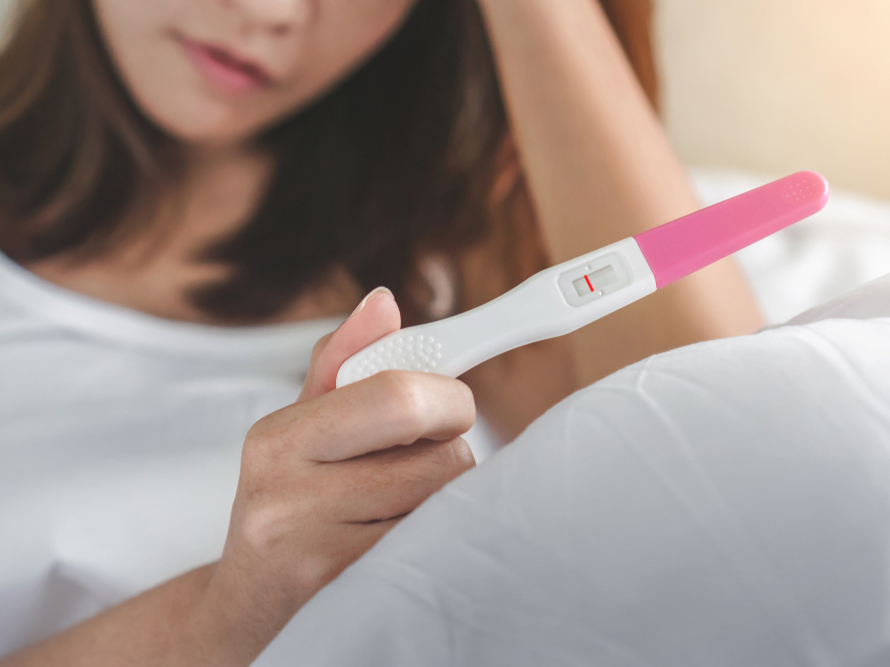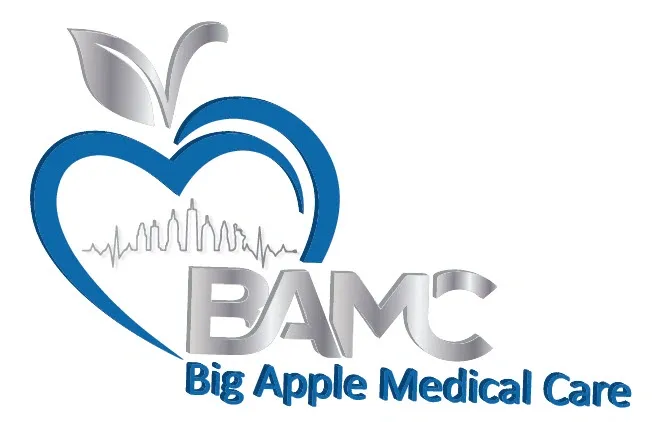Infertility is a deeply personal journey that affects many couples. When one partner—or both—has difficulty conceiving, the physical, emotional, and relational stress can be immense. Fortunately, many couples benefit from seeing a urologist as part of a comprehensive infertility care plan. Urologists specialize in the male reproductive system (and in many settings also offer services directed at male-factor infertility), and their expertise is critical in diagnosing, treating, and supporting the male partner. In this post, we’ll explore how urologists contribute, what issues they address, the diagnostic and treatment options, and how couples can navigate infertility more successfully with urological care.
Understanding the Scope: Why Urology Matters in Infertility
Historically, fertility discussions often focused on the female partner. However, modern research reveals that male factor infertility accounts for a significant portion—some studies suggest up to 50% of infertility cases involve male issues, either alone or in combination with female factors.
Because of this, many fertility centers now integrate a reproductive urologist into their team. These are urologists with additional training and interest in male reproductive health and infertility. They help ensure that both partners receive appropriate evaluation and that male factors are not overlooked.
Common Male Reproductive Issues Urologists Diagnose & Treat
Below are some of the main male infertility causes that urologists investigate:
| Category | What It Means | How Urologists Can Help |
|---|---|---|
| Sperm quantity & quality | Low sperm count (oligospermia), no sperm in the ejaculate (azoospermia), or problems with shape (morphology) and movement (motility). | Semen analysis is often the first step. Urologists then work to find underlying causes (genetic, hormonal, anatomical, etc.) and address them. |
| Anatomical / structural problems | Varicocele (enlarged veins in the scrotum), undescended testes, blockages in the ducts that carry sperm, issues with ejaculatory ducts. | Surgical repair, corrective procedures (e.g., varicocelectomy), reversal of obstructive conditions, microsurgery of ducts, or bypassing blockages. |
| Hormonal / endocrine causes | Disruptions in the hypothalamic-pituitary-gonadal (HPG) axis, low testosterone, abnormal levels of LH, FSH, or other hormones. Disorders like hyperprolactinemia, thyroid dysfunction, etc. | Hormone testing, medical therapy (e.g. gonadotropins), treatment of endocrine disorders, referral if needed. |
| Infections, inflammation & immune issues | Past infections (like mumps orchitis, sexually transmitted infections, prostatitis, epididymitis), inflammation that damages testicular tissue or ducts, immune reactions (anti-sperm antibodies). | Use antibiotics where infection is ongoing, anti-inflammatory treatment, sometimes immunologic evaluation, and in severe cases interventions to reduce damage. |
| Ejaculatory / sexual dysfunctions | Premature ejaculation, retrograde ejaculation (where semen enters the bladder), erectile dysfunction, inability to ejaculate, etc. | Treatment may include medications, therapy/counseling, surgical correction (if anatomical), or assisted reproduction if needed. |
| Genetic defects and congenital abnormality | Conditions like Klinefelter syndrome, Y-chromosome microdeletions, congenital absence of vas deferens, issues with testicular development, undescended testes, etc. | Genetic testing, counseling, sometimes surgical correction, at times use of assisted reproductive technologies (ART) like IVF/ICSI when sperm production is severely impaired. |
Diagnostic Process: What to Expect from a Urologist
If a couple seeks help and includes a urologist, here’s typically what the evaluation includes:
-
History and interview
-
Detailed medical and sexual history (past infections, surgeries, exposures, medications, lifestyle, toxins, etc.).
-
Review of female partner history, because fertility is a joint issue.
-
-
Physical examination
-
Examination of testes, epididymis, vas deferens.
-
Checking for varicoceles, signs of hormonal disorders (body hair, genital development).
-
-
Laboratory tests
-
Semen analysis: volume, sperm count, motility, morphology. Important to often repeat, since results can vary.
-
Hormone panels: testosterone, FSH, LH, prolactin, thyroid hormones, etc.
-
-
Genetic and imaging studies
-
Genetic testing if indicated (e.g., suspected chromosomal abnormalities, Y-chromosome deletions).
-
Imaging: scrotal ultrasound (to look for varicocele, structural anomalies), sometimes ultrasound of the prostate or ejaculatory ducts.
-
-
Assessment of ejaculation/sexual function
-
Evaluating whether ejaculation is normal.
-
Assessing libido, erectile function.
-
-
Assessment of lifestyle factors & environmental exposure
-
Diet, weight, smoking, alcohol, recreational drugs.
-
Heat exposure of testes (tight clothes, saunas, occupation).
-
Exposure to toxins, pesticides, heavy metals.
-
This comprehensive evaluation helps locate the cause(s) so that treatment can be targeted rather than generic.
Treatment Options: How Urologists Intervene
Once the cause(s) are identified, urologists can offer many treatments and strategies, often working in collaboration with fertility specialists and reproductive endocrinologists. The goal is to improve natural conception rates when possible, or to assist via ART when needed. Key interventions include:
-
Surgical repair
-
Varicocelectomy: surgical correction of varicocele can improve sperm count and quality.
-
Correction of obstructions: microsurgery to re-open or bypass blockages in vas deferens, ejaculatory ducts, or other reproductive tract structures.
-
Reversal of vasectomy when applicable.
-
-
Medical / hormonal therapy
-
Treating endocrine disorders (e.g. low testosterone, hypogonadism).
-
Use of gonadotropins or other agents to stimulate sperm production when there is a hormonal deficiency.
-
-
Treatment of infections
-
If bacterial infection or inflammation is present, antibiotics or other antimicrobial therapy. Prompt treatment may preserve or restore fertility potential.
-
-
Addressing sexual function issues
-
Treatment of erectile dysfunction (medications, devices, counseling).
-
Ejaculatory anomalies like retrograde ejaculation can sometimes be managed with medical therapy, or sperm retrieval methods for ART.
-
-
Lifestyle modifications
-
Recommendations relating to weight, diet, exercise, avoidance of smoking/alcohol/drugs, reducing heat exposure to the testes. These often accompany medical/surgical treatments.
-
-
Assisted Reproductive Technologies (ART)
-
When natural conception is unlikely or slower even with interventions, urologists work with fertility clinics to facilitate options like intra-uterine insemination (IUI), in vitro fertilization (IVF), intracytoplasmic sperm injection (ICSI). Urologists may help retrieve sperm via testicular sperm extraction (TESE) or other retrieval methods for use in ART.
-
-
Genetic counseling and support
-
If genetic defects are involved, counseling helps couples understand the implications, risks, and possible options (e.g. use of donor sperm, PGD – preimplantation genetic diagnosis).
-
Collaborative, Holistic Care: The Couple as the Unit
A key part of modern infertility treatment is recognizing that infertility is a shared problem. Urologists seldom work in isolation; successful outcomes usually depend on collaborative care including:
-
Reproductive endocrinologists / fertility specialists (especially for the female partner)
-
Obstetricians / gynecologists
-
Genetic counselors
-
Nutritionists / dietitians
-
Mental health professionals (therapists, counselors)
At Big Apple Medical Care, incorporating this team-based approach ensures not only the biological but also emotional, psychological, and relational aspects are addressed. Urologists play a critical role within such teams by diagnosing male factor issues early, coordinating with other specialists, and tailoring treatment in conjunction with the couple’s preferences and overall health.
When to See a Urologist: Timing & Practical Advice
For couples trying to conceive, here are some guidelines and tips on when to involve a urologist:
-
If you (as a male partner) have known risk factors: previous genital infections, history of undescended testicles, testicular trauma or surgery, varicoceles, or use of drugs, steroids, or other medications that affect sperm.
-
If after 12 months of trying (for women under ~35) or after 6 months (for women over ~35) of unprotected intercourse, conception has not occurred.
-
If there are symptoms in the male partner: problems with erections, ejaculation, pain or swelling in the testes or scrotum, visible varicocele, hormonal symptoms (low libido, fatigue).
-
If there is a prior diagnosis in the female partner but the treatment hasn’t led to conception — sometimes male factor was simply not fully evaluated.
Challenges & Realistic Expectations
While urologists bring many tools and expertise, there are realistic caveats couples should understand:
-
Sometimes the cause of male infertility cannot be identified (“idiopathic infertility”). Even then, interventions (e.g. lifestyle changes, ART) may help.
-
Not all treatments will restore fertility fully. The degree of sperm improvement or success with surgery/ART varies widely.
-
Cost, invasiveness, risks. Surgery has recovery time; hormonal therapy can have side effects; ART is expensive and emotionally taxing.
-
Time is a factor. Fertility decreases with age (female more so, but male age matters, too). So early evaluation is usually better.
-
Emotional stress: dealing with infertility takes a toll. Psychological support should be part of care.
Success Stories & What Couples Can Do
To illustrate what is possible, here are hypothetical (but realistic) scenarios, followed by suggestions for what couples can do.
Case example 1: Varicocele Repair Helps Conception
Ahmed and his wife have been trying to conceive for 18 months. Semen analysis showed Ahmed had low sperm count and poor motility. A physical exam revealed a varicocele. After surgical repair (varicocelectomy), plus lifestyle modifications (improved diet, quitting smoking, reducing heat exposure), repeat semen analysis three months later showed improved sperm concentration and motility. Six months later, the couple successfully conceived naturally.
Case example 2: Hormonal Correction & ART
Farhan had symptoms of low testosterone and infertility; hormonal testing showed hypogonadism. After medical therapy and optimization of hormone levels (with urology and endocrinology), sperm production improved but still not enough for natural conception. They proceeded with ICSI (intracytoplasmic sperm injection) using sperm retrieved via TESE (testicular extraction). The couple achieved a pregnancy through IVF/ICSI with the retrieved sperm.
What Couples Can Do:
-
Don’t delay evaluation: the sooner male factor is assessed, the sooner you know what steps to take.
-
Be open with medical history: sins like drug use, surgeries, exposures, even things that may be embarrassing, matter.
-
Adopt healthy lifestyle changes: maintain healthy weight, eat balanced food, exercise, avoid smoking and excessive alcohol, minimize testicular heat (loose underwear, avoid hot baths/saunas).
-
Follow through with diagnostic tests and treatments, even if they feel overwhelming.
-
Seek emotional support: join support groups, counseling; infertility isn’t only biological, it’s emotional.
-
Have realistic expectations: sometimes treatments help naturally, sometimes assisted reproduction is needed.
How Big Apple Medical Care Supports You
At Big Apple Medical Care, we strive to provide compassionate, state-of-the-art infertility care—including urological evaluation—for couples facing fertility challenges. Here’s how we help:
-
Experienced urologists trained in male reproductive health
-
Access to full diagnostic workups: semen analysis, hormonal testing, imaging, genetic testing
-
Surgical intervention when needed (varicocele repair, obstruction correction, sperm retrieval)
-
Collaboration with reproductive endocrinology and fertility specialists for ART options
-
Support services: counseling, nutritional guidance, lifestyle coaching
-
A patient-centered approach: we understand the emotional and relational impact, and aim for transparency, empathy, and individualized plans
Key Takeaways
-
Male factor infertility is common—around half of all infertility cases have some male contribution. Early involvement of a urologist can speed diagnosis and treatment.
-
Urologists address many underlying causes: anatomical, hormonal, infectious, lifestyle-related, genetic.
-
Diagnosis typically involves history, physical examination, semen analysis, hormone panels, imaging, possibly genetic tests.
-
Treatments include surgery, medical/hormonal therapy, ART, lifestyle changes, and working within a multidisciplinary team.
-
Realistic expectations are essential. Not every treatment leads to natural conception, and sometimes ART is necessary.
-
Emotional and relational support is an important component of fertility care.
At Big Apple Medical Care, we believe no couple should feel alone in the infertility journey. With the proper evaluation, early intervention, and a supportive, multidisciplinary care team, many couples move from questions and uncertainty to renewed hope and successful outcomes. If you’re concerned about fertility or have been trying without success, reach out. Let’s start with a consultation that includes male and female evaluations—and build a path forward together.







